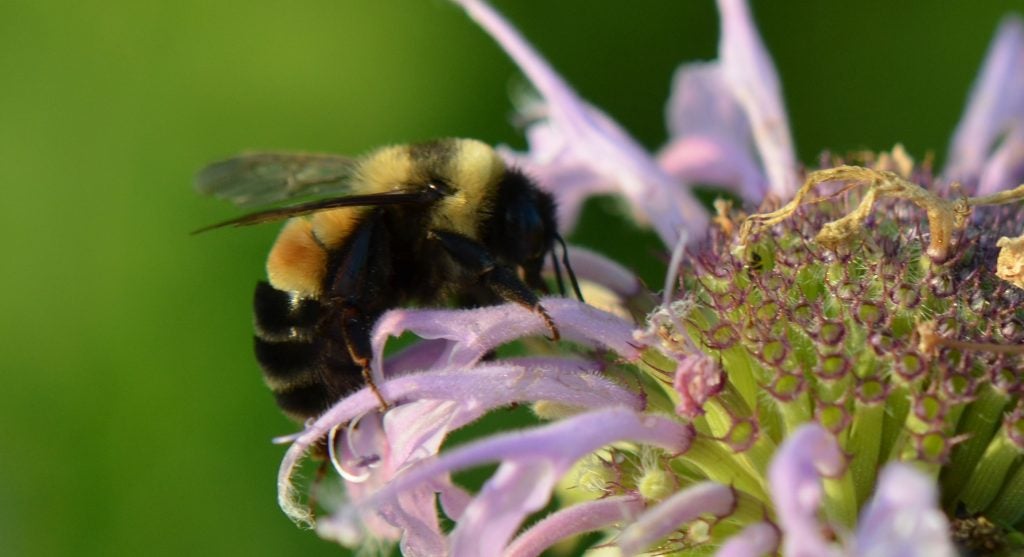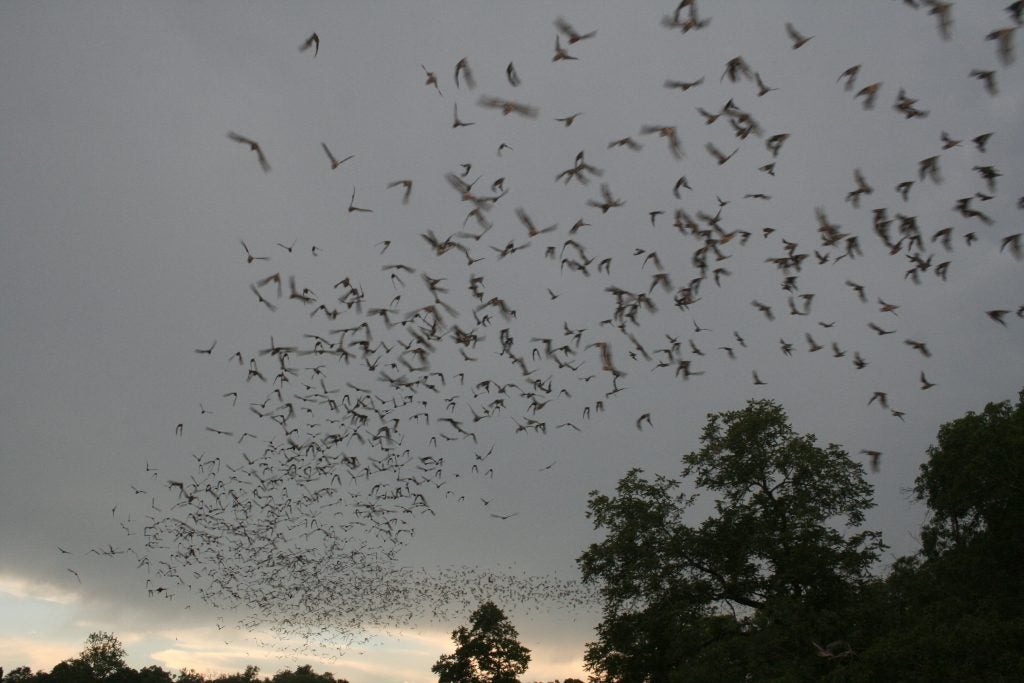The star power of pollinators on the farm
The famous line, “If you build it, he will come,” voiced by an anonymous actor sets the entire plot of Field of Dreams in motion. Kevin Costner as Ray Kinsella may be the star, but the movie depends equally on that unnamed voiceover artist and on the actors playing Kinsella’s late father and former baseball legends, who arrive to play ball on a diamond in the middle of an Iowa cornfield.
This baseball classic shows how leading characters are important, but it is often supporting characters who carry the show. The same is true in nature. Charismatic species get the spotlight, but it’s a biologically diverse ensemble cast that creates a healthy ecosystem.
In the drama to save rapidly declining pollinators, which provide $3 billion of pollination services to U.S. agriculture each year, monarch butterflies are the high-profile star. The species’ population has plummeted 90% over the past two decades, a decline emblematic of the larger challenges that all pollinators face. The monarch’s many fans — drawn in by the butterfly’s beauty and awesome migration — have rallied to save them, and conservation efforts are benefitting other lesser-known, critically important pollinators.
If we had the Oscars for pollinators, monarchs would likely be nominated for the best actor category. The best supporting actor category would be competitive, but these three species, which work alongside the famous butterfly, would be strong contenders.
The monarch butterfly may be the most famous pollinator, but lesser-known species have the most outstanding performances in the field. Share on XRusty patched bumblebee
The rusty patched and other bumblebees play essential roles in both food security and ecosystem health.
For some crops and wildflowers, native bumblebees are more effective pollinators than honeybees because they can buzz pollinate, or vibrate at a frequency that dislodges pollen and makes pollination more efficient. This vital ecosystem service boosts the availability of plants that provide food, forage and habitat while also improving water quality and soil health.
After experiencing population declines of 87% over two decades, the rusty patched bumblebee in 2017 became the first bumblebee to be listed as an endangered species — a warning sign that the threats to bees and other pollinators require urgent attention.

Mexican free-tailed bat
Like the monarch butterfly, Mexican free-tailed bats migrate north from Mexico into Central Texas to breed. Both species also depend on a variety of habitats, ranging from high-elevation forests to lower-elevation rangelands, and in turn provide critical ecosystem services.
Bats are not only highly effective nocturnal pollinators that boost global supplies of fruits and tequila. They’re also voracious consumers of agricultural pests like cotton bollworm moths and corn earworms.
In Texas, Mexican free-tailed bats save farmers an annual $724,000 in avoided crop damage and reduced pesticide use. Throughout the U.S., bats as a whole provide at least $3.7 billion per year of pest-control services, though scientists estimate the benefit could be as high as $53 billion per year.

Ladybird beetle
Although bees tend to be the most recognized pollinators, beetles are the largest set of pollinating animals and are responsible for pollinating 88% of flowering plants globally. The ladybird beetle, most commonly known as the ladybug, is likely the most recognizable, and loved, pollinating beetle.
Ladybird beetles not only drink nectar and eat pollen, they also prey on various kinds of aphids, many of which are crop pests in California. In the Central Valley, farmers who plant narrow leaf milkweed to benefit monarchs also help to increase ladybird beetle populations and control pest populations.
Milkweed attracts oleander aphids in addition to monarchs. Oleander aphids aren’t a crop pest, and they provide a rich food source for large populations of ladybird beetles that also consume, and help control, other aphids species that do damage crops.
A single beetle can eat more than 5,000 aphids in its lifetime, making ladybird beetles one of the most important beneficial insects that a diverse native habitat of plants can support.

If you plant it, they will come
That famous line from Field of Dreams is often misquoted or misremembered as, “If you build it, they will come.” In the case of pollinator habitat, the misquote is more accurate. If you plant it, they will come.
By planting cover crops, native grasses, milkweed and wildflowers at the edges of fields and in other areas that don’t require taking land out of production, farmers can provide great benefits to bees, butterflies, bats, beetles and countless other pollinators. Most producers see increased pollinator activity within two years. In turn, these pollinators will help maintain healthy ecosystems that increase the resilience of farm and ranch operations, and of the broader agricultural economy.










